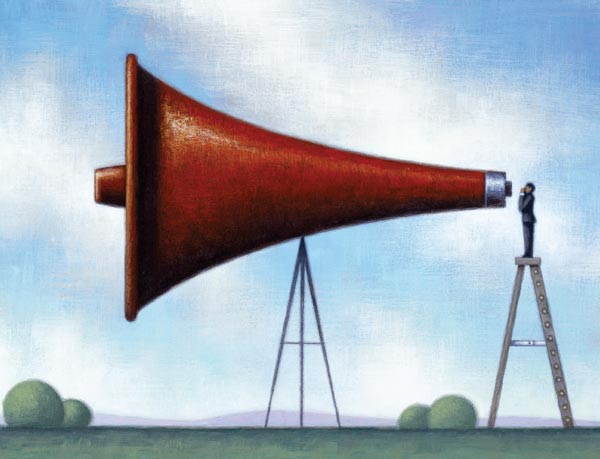Physics World asked me to write for a special issue on Energy, Sustainability and Climate Change. The article, “Publicize or perish,” is online and reposted below with links.
The fate of the next 50 generations may well be determined in the next few months and years. Will the US Congress agree to a shrinking cap on greenhouse-gas emissions and legislation to achieve the transformation to clean energy? If not, you can forget about a global climate deal. But even if the bill passes and a global deal is achieved, both will need to be continuously strengthened in coming years, as the increasingly worrisome science continues to inform the policy, just as in the case of the Montreal Protocol on ozone-depleting substances.
The International Scientific Congress on climate change held in Copenhagen in March, which was attended by 2000 scientists, concluded that “Recent observations confirm that, given high rates of observed emissions, the worst-case Intergovernmental Panel on Climate Change (IPCC) scenario trajectories (or even worse) are being realized.” That would mean that by 2100 there would be atmospheric concentrations of carbon dioxide of more than 1000 ppm, total planetary warming of 5 °C and sea-level rises probably on the high end of recent projections of 1–2 m followed by a rise of as much as 2 cm per year or more for centuries. We would also see one-third of inhabited land reaching dust bowl levels of aridity, half or more of all species becoming extinct, and the oceans increasingly becoming hot, acidic, dead zones. And if we do not change course quickly, the latest science predicts that these impacts may be irreversible for 1000 years. [See “Intro to global warming impacts: Hell and High Water.]
In short, the fate of perhaps the next 100 billion people to walk the Earth rests with scientists (and those who understand the science) trying to communicate the dire nature of the climate problem (and the myriad solutions available now) as well as the ability of the media, the public, opinion-makers and political leaders to understand and deal with that science.
Disinformation and scientific illiteracy
So far, we are failing miserably. Neither the US nor the world as a whole has taken any consequential action to reverse emissions trends. And if the scientific community does not help lead the way in reversing emissions, then we will justifiably bear serious blame from future generations, who will no doubt become increasingly bitter about the havoc our ignorance and myopia has brought them. Nobody will be writing books calling us “the greatest generation.”
As one example of how bad scientific messaging has been, let me go through Gallup polling over the past decade as discussed in a 2008 article in Environment magazine entitled “A widening gap: Republican and Democratic views on climate change”.
The article reported that in 1997 some 52% of Democrats said that the effects of global warming had already begun and 52% said most scientists believe global warming is occurring. In 2008 some 76% said warming had begun and 75% said most scientists believe warming is occurring. It would appear that Democrats believe most scientists.
Few leading climate scientists or major scientific bodies would disagree that the scientific case that the planet is warming – and that humans are the dominant cause of recent temperature rises – has become stronger in the past 10 years. That is clearly seen in the scientific literature – as summarized in the IPCC reports.
And yet for Republicans, in 1997 some 48% said warming had begun and 42% said most scientists believe warming is occurring – a modest six-point differential. By 2008, the percentage of Republicans saying the effects of global warming had already begun had dropped to a mere 42% (an amazing statistic in its own right given the painfully obvious evidence to the contrary). But the percentage saying most scientists believe global warming is occurring had risen to 54% – a stunning 12-point differential.
In short, a significant and growing number of Republicans – one in eight as of 2008 – simply do not believe what they know most scientists believe. That is quite alarming news, given that it is inconceivable that the US will take the very strong action needed to avert catastrophe unless it comes to believe what most scientists believe, namely that we are in big, big trouble and can delay no further.
Here is the lesson for scientists: in the last decade, we have apparently become less convincing to Republicans than the deniers have been. They have apparently become better at messaging, while we have perhaps become worse.
[For more poll details, see “The Deniers are winning, but only with the GOP“.]
In part, this has occurred because there is an organized disinformation campaign promoted by conservative think tanks like the Competitive Enterprise Institute and well funded by fossil-fuel companies like ExxonMobil, with key messages repeated by conservative pundits and politicians like George Will, Rush Limbaugh and Republican Senator James Inhofe. At the same time, the media have treated this more as a political issue than a scientific one, thereby necessitating in their view a “balanced” presentation of both sides, notwithstanding the fact that the overwhelming majority of scientists understand humans are warming the planet and dangerously so. Also, increasingly profit-driven media have been abdicating their role in science education. Science writer Chris Mooney and scientist Sheril Kirshenbaum offer these grim statistics in their recent book Unscientific America: How Scientific Illiteracy Threatens our Future (2009, Basic Books):
- For every five hours of cable news, one minute is devoted to science;
- Some 46% of Americans believe that the Earth is less than 10,000 years old;
- The number of US newspapers with science sections has shrunk by two-thirds in the last 20 years;
- Just 18% of Americans know a scientist personally;
- The overwhelming majority of Americans polled in late 2007 either could not name a scientific role model or named “people who are either not scientists or not alive”.
The lack of scientific messaging
Yet just when the media are abandoning science coverage, many scientists are increasingly reluctant to address politicized issues like global warming.
Scientists who are also great public communicators, like Carl Sagan or Richard Feynman, have grown scarcer as science has become increasingly specialized. Moreover, the media like the glib and the dramatic, which is a style that most scientists deliberately avoid. Scientists like to focus on the things that they do not know, since that is the cutting edge of scientific research. So they do not keep
repeating the things that they do know, which is one reason that the public and the media often do not hear from scientists about the strong areas of consensus on global warming. And as the physicist Mark Bowen writes in Thin Ice (2006, Holt), his book about glaciologist Lonnie Thompson, “Scientists have an annoying habit of backing off when they’re asked to make a plain statement, and climatologists tend to be worse than most.”
As scientist and writer Jared Diamond wrote in a 1997 article in Discover magazine on scientific messaging (or the lack thereof), “Scientists who do communicate effectively with the public often find their colleagues responding with scorn, and even punishing them in ways that affect their careers.” After Sagan became famous, he was rejected for membership of the National Academy of Sciences in a special vote. This became widely known, and, as Diamond writes, “Every scientist is capable of recognizing the obvious implications for his or her self-interest.”
Scientists who have been outspoken about global warming have been repeatedly attacked as having a “political agenda”. As a 2006 article in the Bulletin of the American Meteorological Society explained (87 1025), “For a scientist whose reputation is largely invested in peer-reviewed publications and the citations thereof, there is little professional pay-off for getting involved in debates that mix science and politics.”
The scientific community must figure out how to effectively engage the public on this crucial issue. The physics community in particular must help lead the way. After all, it was effective at warning the public and policymakers about the dangers of that other existential threat to the human race – nuclear weapons. We appear to have walked back from the precipice of global nuclear war only to face an equally grave threat from our unbridled consumption of fossil fuels.
I believe that the major scientific bodies and leading scientists in the US must come together immediately to develop and quickly implement a serious communication strategy. We are again at the precipice. Indeed, it is, as the current Presidential Science Advisor and physicist John Holdren has said many times, too late to avoid dangerous anthropogenic warming of the planet. Now the only question is whether we can avoid unmitigated catastrophe.
One final point. If the scientific community is unable to help persuade the public, opinion-makers and political leaders to take the necessary action now, then the entire relationship of science to the broader world will change forever. When the US and the world do get desperate about global warming in the next decade or two, then the entire focus of society, of scientists and engineers, and of academia will be directed toward a Second-World-War-scale effort to mitigate what we can and adapting to the myriad miseries that our myopic dawdling has made inevitable. I do not think that the scientific community has even begun to think about that.
Related Post:



